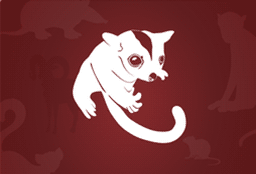A tall tree to 40 m with smooth bark, mottled, shedding at intervals throughout the year showing white, yellow and grey, becoming roughened at the base.
Frequently a straight tree but can develop more twisted habit in drier conditions.
Leaves
The tree has a large, dense crown of long and narrow adult leaves, lanceolate in shape or infrequently sickle-shaped, 5 - 30 cm long by 0.7 - 3.2 cm wide, and grey to grey-green on both surfaces. Side veins are prominent and usually at 45° to the leaf midrib, and oil glands are numerous and located separate to the veins.
Flowers
Its inflorescences (flower heads) are comprised of umbels of 7 to 11 flower buds located at the junction of the leaves and stem with the buds being of ovoid or globular shape and 0.6 - 1.1 cm long by 0.3 - 0.6 cm wide. Buds are green to yellow or cream, and have a prominent tip beak. Flowers are white to cream.
The southern brown tree frog is native to southern Australia. Other common names of this tree frog are brown tree frog, whistling tree frog, or Ewing's tree frog.
Ranges from pale fawn, cream, or orange to light brown, although some individuals in western Victoria and South Australia are partly or completely green. It has a wide brown band that starts from between its eyes and runs down its back. Darker flecks are also scattered across its back. It has a narrow black or brown stripe that runs from its snout to its shoulder, and a pale stripe that runs from below its eye to the base of its arm. Its belly is white to yellow and breeding males have a light brown vocal sac (beneath their mouth).
Distinctive features
Its back is smooth with small lumps, its fingers have no webbing and its toes are half webbed.
Perennial, rhizomatous herb with strappy leaves.
Leaves
Glossy green, firm and flat. Long and thin up to 1 m long and roughly 1 cm wide. Leaves are usually taller than the flowering stem. Leaf base is broad with brownish edges. Tips of leaves have teeth.
Flowers
Grow in a whorled cluster attached to a straw-coloured bracts. Individual flowers are roughly 4mm long, but the cluster and leaf grow to 50 cm. Have a strong scent. Flower head is brown – during flowering petals are creamy yellow.
Was previously named Bracteantha viscosa, and before that Helichrysum viscosum.
Small stiff herb with multiple branches and hair covered stems. Grows up to 20 - 80 cm high.
Leaves
Stems with fine hairs or prickles. 30 - 100 mm long and 2 - 10 mm wide linear leaves with bright green elliptic (oval like shape) that have a sticky and rough surface.
Flowers
Bright yellow flower heads, 20-30mm wide. Displays colours of gold, orange, bronze or vibrant yellow. These appear in September to December but may occur later. Large single flower surrounded by many bracts (petals).
The striped marsh frog or brown-striped frog is a common species in urban habitats It is a mostly aquatic frog native to coastal Eastern Australia.
A pale to grey-brown back with darker brown stripes. Usually also a pale stripe running down the middle of its back. Its belly is white and often flecked with brown, and there are dark spots and stripes on its limbs.
Size
4.5 - 7.5 cm
Grey soft fur, with a white belly and a black stripe that runs from its nose, over its head and along its back. It has a long bushy tail, the last quarter of which is black, often with a white tip. Its ears are large and hairless, and its large eyes are black.
Size
About 28 cm long (from nose to tip of tail).
Also know as Blackthorn.
A woody shrub to small tree, usually with thorny branches. Grows up to 5 – 10 m high.
Leaves
Glabrous, dark green, 20 – 44 mm long and 5 – 9 –mm wide.
Flowers
White, 6 – 10 mm wide, fragrant.
Mostly bright green, with a blue crown, cheeks and colouring on its wings. It has red around its bill, throat and forehead, and bright red patches under each wing. The red on its throat is edged with yellow and its long, pointed tail is purple-red. The female is slightly duller, with a creamy bar under its wings.
Size
About 25 cm; ; Wingspan 32 – 36 cm
Metallic blue-black on top and light to dark grey on its breast and belly. Its forehead, throat and upper breast are rust in colour. It has grey legs and feet, and its eyes and bill are black. A young Welcome Swallow has shorter tail feathers than an adult and its forehead and throat are a creamy beige (instead of rust).
Distinctive feature
A deeply forked tail with a white band or row of spots on the long tail feathers.
One of Australia's most widespread birds on mainland.Mostly black with a white belly and eyebrow. A young bird has paler, slightly rusty edges to its wing feathers.
Size
18 - 22 cm long (from head to tail)




